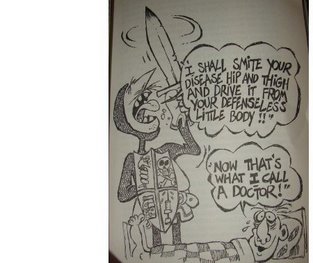NNT - how come some are so different
There's another instructive way to consider the numbers. Suppose that 100 people with high cholesterol levels took statins. Of them, 93 wouldn't have had heart attacks anyway. Five people have heart attacks despite taking Pravachol. Only the remaining two out of the original 100 avoided a heart attack by taking the daily pills. In the end, 100 people needed to be treated to avoid two heart attacks during the study period—so, the number of people who must get the treatment for a single person to benefit is 50. This is known as the "number needed to treat - see rest ofExample
article
Sixty-year-old female with hypercholesterolaemia
The readily available New Zealand cardiovascular risk calculator can quantify absolute risk. With a blood pressure of 130/80, total cholesterol of 7.5 mmol/L, and an HDL cholesterol of 1.1 mmol/L, a non-smoking non-diabetic female has a fiveyear cardiovascular event risk of 7%. It is generally agreed that statins will reduce risk by a third. With treatment the five-year risk is thus about 5%.
When discussing the merit of treatment against the effort and potential adverse effects, consider the absolute risk reduction. About seven in 100 people will have an event in five years with no treatment, but if 100 take the statin for five years, five will have an event.
Beta blockers 20 people for five years
Asprin like drugs 50 people for five years
Statins 100 people for five years
take a look
Here's more on statins
Here's a good one with statins relating NNT to cardiovascular risk
same here NZ calculator
BP treatment 50 to 80 need to be treated for five years to prevent one death. And about 20 for five years to prevent one cardiovascular event.
Here's another list of NNTs
And another list of NNTs
Here Bandolier on NNT and here
some more statin ones in primary prevention and .
- the authors affirm that statin therapy could reduce the absolute risk of coronary events during the next 4.3 years by 0.75% in low-risk patients (NNT= 133), by 1.63% (NNT=61) in moderate-risk patients and by 2.51% (NNT=40) in high-risk patients. They also conclude that it could be cost-effective in patients with an absolute risk over 20% of having a coronary event in the following 10 years. It would not be cost-effective in patients with a risk <10%,>
- the study authors concluded that, in patients without CV disease, statin therapy decreases the incidence of major coronary and cerebrovascular events and revascularizations but not coronary heart disease or overall mortality
Reference:


No comments:
Post a Comment